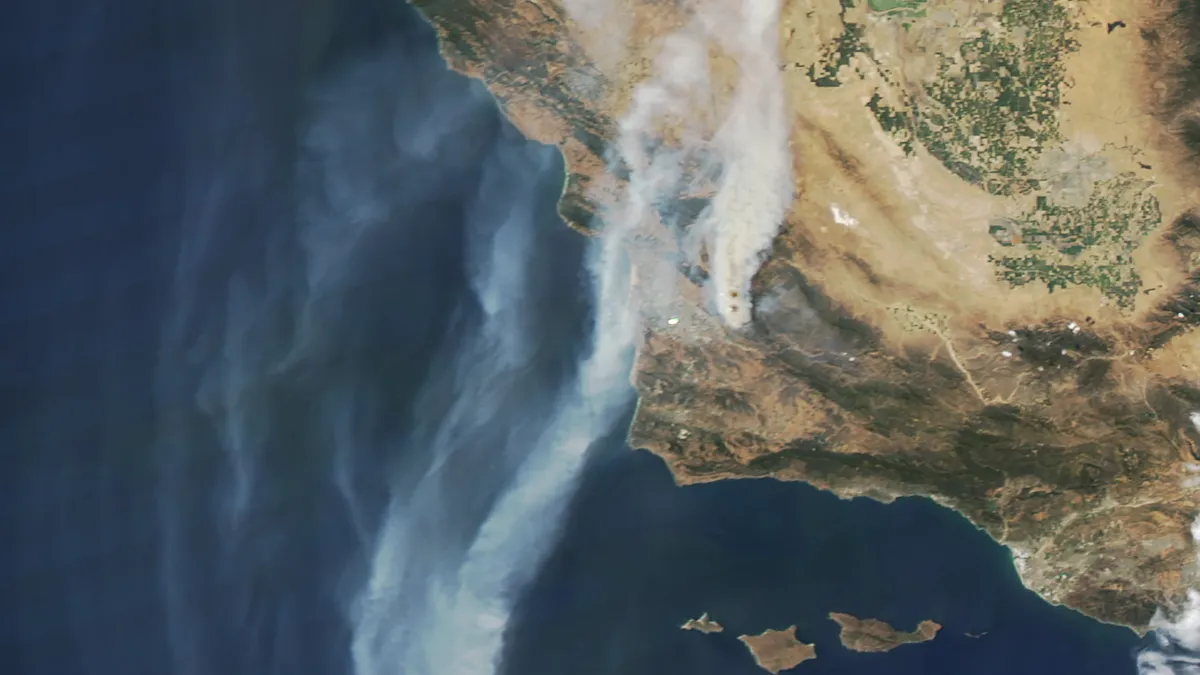Dive Brief:
- Pacific Gas & Electric’s (PG&E) bid to securitize $7.5 billion in costs associated with the 2017 wildfires in its service territory could hit ratepayers hard, consumer advocates are warning state regulators.
-
PG&E has proposed creating a customer credit trust to offset additional charges that customers could face if the securitization is approved. But modeling from ratepayer group The Utility Reform Network (TURN) suggests that there is a 40% chance that trust will have a shortfall — as opposed to PG&E’s estimate of 16% — in which case ratepayers would be on the hook for an average of nearly $2 billion, under TURN's modeling.
- "If there is a shortfall, that means that PG&E’s customers will be forced to pay higher rates to fund PG&E’s wildfire liabilities. Another word for that is bailout," Tom Long, legal director at TURN, said during oral arguments at the California Public Utilities Commission (CPUC) Friday.
Dive Insight:
The CPUC will be voting on two proposals in the next several weeks which, if approved, will allow PG&E to finance $7.5 billion of wildfire costs by issuing ratepayer-backed recovery bonds. The utility has said that the securitization, which would allow it to retire around $6 billion in debt, will ultimately save customers money by improving its credit-worthiness.
To offset the impact on ratepayers, PG&E would establish a shareholder-funded trust to pay out monthly credits to its customers. Shareholders would fund the trust with $1 billion this year, $1 billion before February 2024, and nearly $7.6 billion drawn from certain shareholder-owned tax deductions or net operating losses. But groups like TURN and the CPUC’s Public Advocates Office are concerned that the utility is essentially shifting risks from shareholders to ratepayers, who will be left to shoulder PG&E’s wildfire costs if the money isn't available in a timely manner.
"Any deviations to the timing and availability of those net operating losses will jeopardize the performance of the trust," said Robert Pocta, with the Public Advocates Office, at the CPUC meeting Friday. The office is urging regulators to opt for a lower securitization of $6 billion, which will reduce customer exposure if the trust does have a shortfall.
TURN’s modeling suggests that in the 40% of outcomes in which the trust does have a shortfall, ratepayers would have to pay an average of almost $2 billion, rather than the $20 million to $30 million risk that the CPUC’s proposal identifies, according to Long.
Another concern is that PG&E may have based its financial modeling on optimistic forecasts. The utility is assuming that its rate base and earnings will rise by 7% annually from 2024 to 2030, and 5% after that, Long noted — a steep growth path, given that its earnings between 1988 and 2019 trended downwards, excluding one-off events, according to TURN.
There is also a risk that the utility could face financial hits from additional wildfires, especially in light of a county district attorney’s decision to file criminal charges against the utility over the 2019 Kincade Fire, ratepayer advocates worry. And if the expected $7.6 billion contributions from shareholders are delayed, there may not be enough time to allow investment returns to accrue, again leaving ratepayers with a shortfall, Long said.
More broadly, the consumer group is worried that the proposal would essentially tie PG&E’s ability to protect ratepayers from price hikes with its own financial success. This could mean commissioners could think twice about handing the utility a disallowance for future negligence and violations because it could jeopardize the funding of the customer trust, Long said.
And some groups worry about how the proposal will affect customers that receive financial assistance through the California Alternate Rates for Energy and Family Electric Rate Assistance programs.
"[A]ny time there is not enough money in the trust to fully reimburse the fixed recovery charges paid by other ratepayers, [these] bills will automatically go up," John Geesman, an attorney representing the Alliance for Nuclear Responsibility, said.
PG&E attorney Henry Weissmann pushed back on some of these concerns at the meeting, saying that even if the net operating losses carryforwards are delayed, "the modeling shows nevertheless a very high probability that the trust will end up with a surplus." Moreover, the CPUC plans to check in on the trust in 2040 and if needed, require PG&E to make an additional contribution of up to $775 million.
"Rejection of securitization would undermine PG&E’s strategy to restore its financial health, which would ultimately result in higher costs to customers and impediments to the achievement of the state’s climate goals," Weissmann said.
In addition, PG&E did not approve of the advocates’ office suggestion of reducing the securitization to $6 billion. This would necessitate financing the remaining $1.5 billion through debt or some other means, "which impairs PG&E’s ability to financially rehabilitate itself and achieve the commission’s goals of deleveraging," Weissmann explained.















